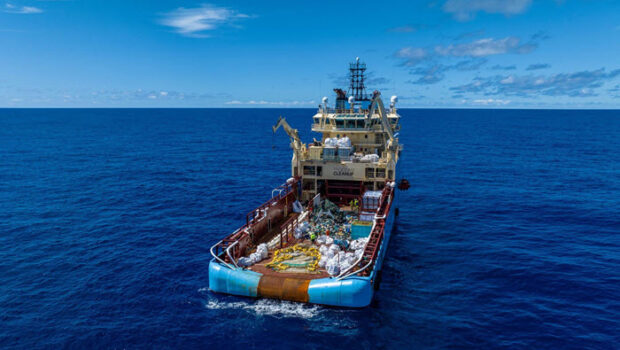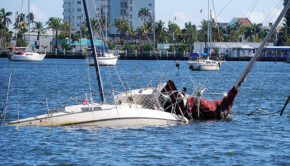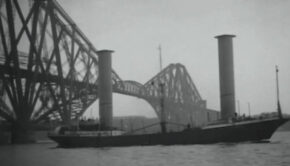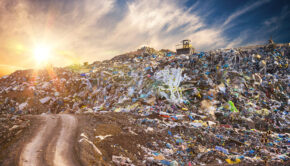Ocean clean-up is worth the effort
Published on May 28th, 2025
The Great Pacific Garbage Patch (GPGP) is a collection of marine debris in the North Pacific, captured by four currents rotating clockwise. It is far enough offshore to be forgotten, though summer offshore races from California to Hawaii bring back stories of the trash.
While backing down to clear discarded ghost nets and other fishing gear from the keel is a bummer, it is the plastic waste, which degrades into tinier and tinier pieces, which is the silent killer. But are efforts to clear the debris doing more harm than good?
Apparently not, according to a Net Environmental Benefit Assessment (NEBA) which evaluated the environmental impact of cleaning up the GPGP. In the study, published in science journal Scientific Reports, scientists found that the benefits of its removal outweighed potential environmental costs, including greenhouse gas emissions and ecosystem disruptions, as a result of carrying out the cleanup.
The assessment was led by The Ocean Cleanup, a Dutch-based nonprofit, which has been using two vessels to tow a 2.2km wide collection system to capture the floating plastic over the past years. The GPGP is estimated to contain around 100,000 tons of plastic, roughly covering an area three times the size of France and is located between California and Hawaii.
Its release comes ahead of the Third United Nations Ocean Conference (UNOC3) in June and this summer’s Global Plastics Treaty (INC5.2) debate which will be crucial in addressing global plastic pollution on land and the environmentally sound removal of legacy ocean plastic.
Dr. Matthias Egger, study author and The Ocean Cleanup’s Director of Environmental and Social Affairs, reports how the “findings clearly show that marine life is more vulnerable to plastic pollution than to our offshore cleanup efforts in the GPGP.
“The estimated cleanup-related carbon emissions are significantly lower than mitigated potential long-term microplastics impacts on ocean carbon sequestration, which is a critical element in regulating our climate and absorbing up to 30% of man-made CO2 emissions.
“This assessment demonstrates that it is possible to carry out such an innovative feat of human ingenuity to clean the ocean in not only an environmentally friendly way but with a benefit to ecosystems and climate regulation that can be replicated in other areas using the framework we have developed.”
The peer-reviewed assessment was commissioned by The Ocean Cleanup and co-authored by 15 independent scientists to ensure impartiality. The created framework can also act as a template to ascertain the net environmental benefits of cleaning up other areas of ocean.
The review is also a response to concerns raised about bycatch of marine life from the cleanup operations, which the study found to be minimal, and previous issues raised on the impact on species living amongst the plastic waste. Most species were found to be ‘coastal invaders’ that had hitched a ride on the plastic and their removal could restore the balance of the ecosystem.
The carbon emissions from the vessels, used to tow the system that sweeps the four-meter-deep top layer of the ocean surface to concentrate the floating debris, were found to be significantly lower than mitigated potential long-term microplastics impacts on ocean carbon sequestration.
Additionally, current work to improve the systems efficiency and the use of AI technology to predict and identify the main concentrations of plastic in the wider area, will inform future navigation and increase collection efficiency. As well as reducing the time taken to clean the GPGP, this “hotspot hunting” would reduce future emissions.
As the ocean plastic decomposes and fragments into microplastics, it releases greenhouse gases which contribute to climate change. Microplastics also disrupt the ocean’s natural carbon cycle or ‘biological pump’ which is a natural process that helps absorb carbon from the atmosphere which is then stored in the deeper ocean and is crucial to regulate the earth’s climate.
Microplastics interfere with the process by which zooplankton and other microscopic creatures feed on carbon rich particles then sink towards the ocean floor, naturally sequestering the carbon. Assessment modelling found that this level of interference by microplastics pollution could be reducing this carbon export in the NPGP by 30-65%, the equivalent of up to 7-13 million metric tons of carbon per year.
With global plastic production set to double by 2050, this multi-faceted problem will require systemic change in its production and use, robust policies such as the proposed Global Plastics Treaty and business, consumer and fishing industry changes.
“Fisheries being the main contributor to floating marine litter in the Great Pacific Garbage Patch, increased focus is needed to limit the influx of discarded gear through cross-sectoral cooperation and holistic, long-term policies that support sustainable fisheries,” noted Dr. Vilma Havas, study co-author and independent scientist.
“Gear losses can effectively be targeted through life cycle-focused policies that apply circularity principles, such as Extended Producer Responsibility schemes that promote increased transparency of material flows in fisheries.”









 We’ll keep your information safe.
We’ll keep your information safe.